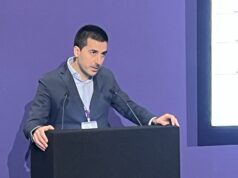
The Society for Cardiovascular Angiography and Interventions (SCAI) and the Canadian Association of Interventional Cardiology (CAIC) have launched a new registry—NACMI (North American COVID-19 ST-segment elevation myocardial infarction registry)—to better understand the presentation of ST-segment elevation in patients with COVID-19. Principal investigators Payam Dehghani (University of Saskatchewan, Regina, Saskatchewan, Canada) and Tim Henry (The Christ Hospital Medical, Cincinnati, USA) speak to Cardiovascular News about the new registry.
What do we know about how ST-segment elevation presents in COVID patients?
Tim Henry (TH): We know that at least 20–30% of hospitalised COVID patients will develop myocardial injury due to a variety of mechanisms including myocarditis, right heart failure, or demand ischaemia. For example, another group of patients will develop ST-segment elevation, with or without coronary obstruction.
Because of cases shared on social media and a newly published case series in the New England Journal of Medicine, there has been considerable interest and discussion about COVID-19 patients with ST-Elevation. Mechanisms include typical plaque rupture with coronary occlusion, prothrombotic coronary events, myocarditis, stress cardiomyopathy and spontaneous coronary artery dissection that have all been reported. Ultimately, we do not understand the full spectrum until we have more complete data.
The 18 cases of ST-segment elevation that were published in New England Journal of Medicine were dramatically different what we are used to. More patients developed ST-elevation in hospital, more patients had no clear culprit and mortality was much higher. In fact, about half of the patients never even went to the cath lab. COVID-19 has profoundly changed cardiovascular practices across the USA and Canada, and throughout the world actually.
Is this aim of the registry to provide more clarity?

Payam Dehghani (PD): I am a member of two large social media groups across the USA and Canada and we were discussing ST-segment elevation in COVID-19, and this sort of became a research report in itself. Therefore, we decided to do this systematically in a registry. It is an attempt to document in real time what is happening.
We have already recruited 110 sites and over 20 are activated. At the moment, our goal is to report on the first two to three hundred cases in the registry to get a paper out as fast as possible to give a snapshot of what is happening across the two countries [the USA and Canada]. We have specifically asked that people also report the people under investigation for COVID even if they turn out not to be COVID negative. COVID-19 is clearly affecting how we are managing myocardial infarction in general, so we are interested in that as well.
TH: Many centres are treating all patients as suspected COVID cases. So at the beginning of the registry, there will be more suspected cases. But as we get more rapid testing, this number will drop. I think the suspected COVID population will be very valuable. The registry will record whether they were subsequently positive or subsequently negative, which will lead to an interesting comparison in itself. We want to review the typical STEMI population. I suspect that non-COVID STEMI patients are treated slower, many more than usual will not undergo coronary angiography and more will get thrombolytics. So, we are going to see changes and new patterns. COVID is likely here to stay and I think the insights that we will get from this registry are incredibly important.
What is the primary endpoint of the registry?
TH: The primary endpoint of the registry is in-hospital major adverse cardiac event (MACE)—defined as a composite of all-cause mortality, stroke, recurrent myocardial infarction, and repeat unplanned revascularisation. The secondary endpoints include MACE at one year; we will also study prespecified subgroups like patients with no clear culprit and patients who develop ST-elevation in the hospital. We will also have ECG and angiographic core labs.
Why have SCAI and CAIC decided to work together on this initiative?
PD: I was part of the SCAI emerging leadership and mentorship programme, and I have kept in touch with the people I met during the programme. So, I had a foot in the SCAI world and, because I am Canadian and practice in Canada, I also have a foot in the CAIC. I was communicating with the membership and the executive leadership of both groups and we were working well together. They have hosted a few joint webinars. So, the registry has made sense from a personal level and executive leadership level. Now, everyone has sort of adopted it as a shared project. What is particularly nice is that there has never been a North American myocardial infarction registry before.
TH: The registry is incredibly positive. SCAI and CAIC have been working very closely together, as well as American College of Cardiology (ACC), and this is what we should do all of the time. I think it is terrific because this collaboration is in the best interests of interventional cardiologists in North America.
Additionally, in July, an entire issue of JACC: Case reports will look specifically at complications of late presenting patients with ST-elevation. This is an important concept. We need to know where the missing STEMIs are! We have spent years trying to get patients to come to hospital as quickly as possible when they have symptoms of a STEMI. But now, over a few months, we have succeeded in creating fear of the hospital. Going forward, an important challenge is to reverse that trend. Rapid reperfusion is essential in STEMI treatment.
N.B. Santiago Garcia (Minneapolis Heart Foundation, Minneapolis, USA) is the third principal investigator of the project.













